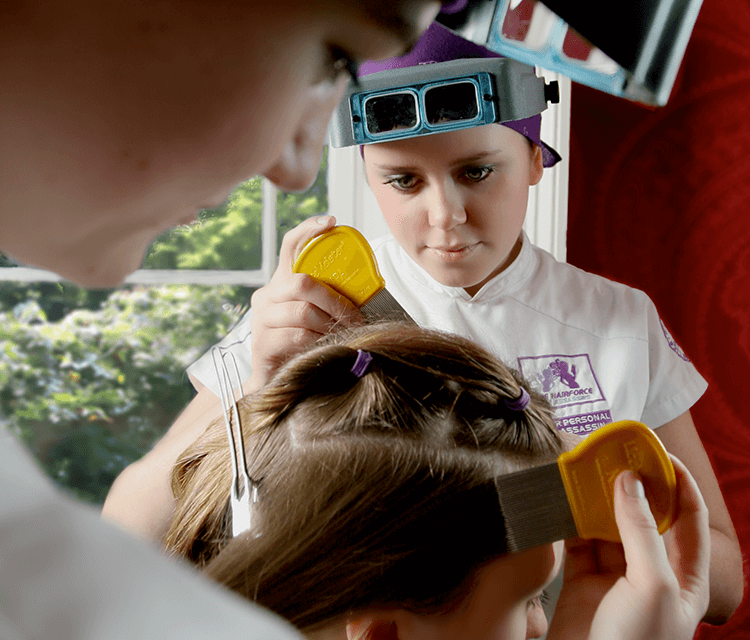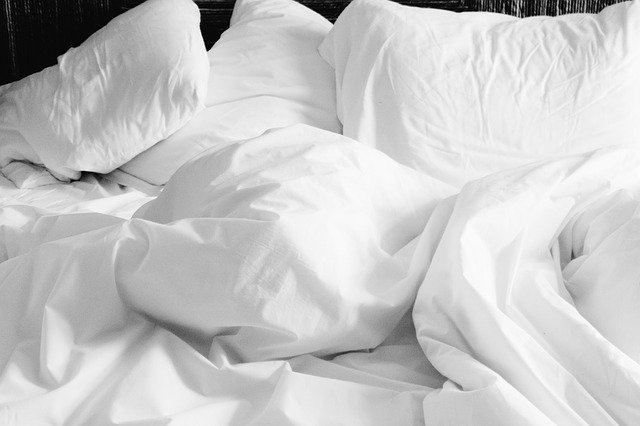When an infestation enters the house, you need to be on it to ensure that it is dealt with efficiently and effectively. If not, then you may fall victim to a recurring head lice infestation that can go on for a very long time. In this article, we reveal our top tips for how to prevent nits.
Why can head lice be difficult to solve?
Head lice can be difficult to solve for a couple of significant reasons.
Firstly, whilst head lice treatment products claim to be the way to solve the problem, their low levels of effectiveness mean they often don’t. When they work, they will kill the head lice, but significantly not the eggs.
If the eggs – the nits – aren’t also dealt with they go on to hatch, the head lice develop and grow up, they breed and off you go again. This leads many people to think that their child keeps on picking lice up at school or from friends on a 3 week to monthly basis when it is the head lice development cycle picking itself back up again.
Secondly, removing all the lice and all the eggs is a forensic, time-consuming business which requires patience, good light and good eyesight.

Additionally, the eggs are invisible when they are laid, so after a few comb-outs, you need to be aware that more of them will be coming through once the embryo in them starts to develop. Therefore, timings are key, and you need to comb diligently over the 11-day period that they come through and hatch.
Why do head lice keep recurring?
You may be wondering: why won’t my lice go away? Head lice keep recurring when eggs are missed and left in the hair. Those missed eggs then hatch and you find head lice again. Removing all the eggs is key to stopping head lie recurring. The eggs are tiny and glued firmly onto the hair.
When head lice lay their eggs, they lay them close to the scalp, so you will find them near the root of the hair. Because they are firmly glued on as the hair grows, they are then found further down the hair shaft.
You need to pull the eggs off the hair strand using a good quality long-toothed, metal nit comb or your fingernails. A plastic comb or a hairbrush just won’t get them off, so don’t waste your time doing that.
Head lice may recur if your child’s best or close friend(s) have head lice and no one is sufficiently clearing it or simply aren’t aware their child has it. Sharing your knowledge can help all the parents tackle this situation. Be polite and helpful and see this as a team effort.
To protect your child’s hair from recurring head lice always tie it back in a plait or braid. There are lots of great hairstyles that you can do to ensure the hair isn’t flying around everywhere and therefore vulnerable to touching others hair and picking up stray head lice.
How long can an infestation go on for?
A head lice infestation can keep renewing itself indefinitely. New eggs are being laid daily – up to 10 a day from one adult female louse. That daily batch of eggs takes 7 to 11 days to hatch.
Those new-born head lice will then take 9 to 12 days to become adults. After that, they will mate and within 24 hours lay their first eggs. The head lice infestation keeps multiplying and multiplying.
If you don’t work at clearing it then you end up with a very severe infestation indeed. If you do work at clearing it but don’t quite get it all out, then you end up with one of the lower level infestations that keep ticking over and go on and on.
Can head lice live on pillows and sheets?
Head lice need human blood to live, thrive and grow. They therefore cannot live in or on inanimate objects for too long before. They will need to crawl back onto a human head and feed.

Because they can survive 24 to 48 hours off the head, you should give your child clean pillowcases and sheets the day you give them a good nit comb. That way, when they get back into bed you eradicate the risk of something crawling back into their hair.
Likewise, give the sofa a hoover and get fresh towels. Also, hoover their hat and coat and the favourite toy they like to sleep with if they have one. This is all about ensuring that if anything has crawled off it doesn’t get back on!
How to solve recurring head lice
To solve the problem of recurring head lice here is some professional advice from The Hairforce for parents:
- When you find any nits or head lice the most effective thing you can do is comb them all out. Be thorough and do it more than once a week so you don’t give the lice time to lay eggs
- Nit combing is best by using a long-toothed metal nit comb
- Effective checking and clearing are not just down to the comb. You need a system to ensure you comb the whole head thoroughly, so don’t miss anything
- To do this divide the hair into sections and ponytail each of them to control the task. 8 sections in total, 4 each side should do it
- Then work through each section touching the scalp with the nit comb and taking it all the way through the hair and out. Put a little conditioner on it so it can glide through the hair and comb thoroughly. Clean the comb with white toilet paper as you go so you can inspect anything you extract and bin it
- Look at the toilet paper to see if there are any brown or black specks. If they have the shape of teardrops then they are nits (the eggs). If you find head lice, they have 6 legs and can be tiny. They can be pale if they are young or as they grow older, they are dark from old oxidized blood
- When you finish a section, re-bunch and move on to the next until you have combed out every section thoroughly
Other tips for getting rid of nits and lice
- Head lice are movement-sensitive, so as soon as you touch the hair they are running away from you. Dividing the hair into sections helps contain and control that movement.
- If you are wanting to understand how to prevent nits, remember that timing is everything with clearing head lice. If you don’t respect that you court failure. The eggs take 7 to 11 days to hatch and the lice take 9 to 12 days to mature into adults. When you find them your combing cycle should be as follows: Day 1, day 2, day 6, day 9 and day 12.
- Do not rely on the head lice products. They have very low rates of effectiveness and therefore often operate simply as expensive combing aids. When they do work, they may kill the head lice – they will not affect the eggs, and it is the eggs that often defeat parents. If you do not comb out the eggs (the nits) then they will hatch, grow up, breed, lay eggs and off you go again.
If you find yourself asking why won’t my lice go away, want a professional check, or need it all cleared out, then do contact us. Our network of nit and head lice removal clinics can sort it for you in 2 appointments, 7 days apart